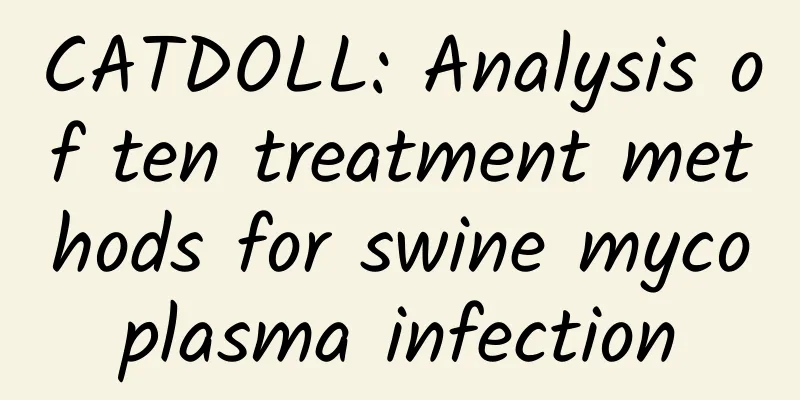CATDOLL : CATDOLL: What are the prospects or breeding technology of the emerging protein worm industry?

Is the emerging industry of protein worms promising or has good breeding technology?The emerging industry of protein worms has good prospects. Protein worm (Yellow mealworm) breeding technology Equipment and Facilities The most common artificial breeding method for mealworms is box breeding, which can be adopted regardless of the scale of breeding. The main equipment includes insect breeding boxes, egg boxes and sieves. 1. Insect breeding: The box specifications are 100 cm long, 50 cm wide, and 8 cm high. Use wide tape to stick to the inner wall and flatten it to prevent the insects from escaping. Use 1 to 1.5 cm thick wooden boards on the sides of the box. The bottom of the box can be made of plywood or fiberboard, or a plastic basin. 2. Egg box: The surroundings are the same as the insect box, but the bottom is made of screen instead of plywood. The specifications should be slightly smaller than the insect box so that the egg screen can be placed in the insect box to form a set of egg collection boxes and reduce the workload. 3. Sieve: Several sieves of different specifications are needed, with mesh sizes of 100, 60, and 40. The sieve is used to screen out insect feces of different ages and separate insects. The structure of the sieve is similar to that of the egg box, except that the bottom mesh is different. The bottom mesh is made of 100, 60, or 40 mesh nylon or iron mesh. Yellow mealworms do not require high breeding sites. The room should be rat-proof, bird-proof, gecko-proof, etc., and prevent direct sunlight, keep dark, and well ventilated. The temperature in summer should be controlled below 33°C, and the temperature should be raised to above 20°C in winter if reproduction and production are to continue. If there is no production, the insects can enter the wintering state. The breeding room should pay attention to ventilation and dehumidification to prevent hypoxia and the breeding of harmful mites. Feeding and management techniques After the insect seeds are obtained, they are carefully screened to select those that are large, neat, vigorous and brightly colored. They are then fed in special boxes (pots). Mealworms are social insects. When larvae live in groups, they rub against each other, which can promote blood circulation and digestion, and enhance mobility. However, if the density is too high, the larvae will crowd each other and rub against each other to generate heat, which will increase the local temperature and cause cannibalism. Therefore, the larval stocking density should generally be maintained at 3.5 to 6 kilograms per square meter. The larvae are large, so the density should be relatively small. The density should also be smaller when the room temperature is high and the humidity is high. The breeding density of adults for reproduction should be maintained at 5,000 to 10,000 per square meter. Feeds are generally made of bran, rice bran, distiller's grains, peanut bran, etc., and vegetable leaves, tree leaves, melon and fruit peels, etc. In addition, when raising mealworms on a large scale, fermented feed can be used, using wheat straw, rice straw, corn stalks, etc. for fermentation and feeding. Fermented feed can reduce production costs, turn waste into treasure, and is rich in nutrition. It is a mealworm feed worth promoting. Practice has proved that the use of fermented feed is not only low in cost, but also can accelerate its growth rate and increase its reproduction rate. 1. Feeding mealworm larvae and separating pupae: After mealworm larvae hatch, they begin to eat the feed in the egg box. To prevent dryness and water shortage, some fresh food such as melon and fruit peels can be buried in the bran. They will basically finish eating in 10 to 20 days, and then the worm feces should be screened out as soon as possible (with a 100-mesh screen). The amount of feed put in each time is 10% to 20% of the total weight of the worms. Generally, the larvae are screened once every 3 to 5 days and fed once. When the larvae grow to more than 12 years old, they begin to pupate. When pupating, the pupae must be separated in time, otherwise they are easy to be bitten by larvae or adults. There are many ways to separate the pupae, such as manual selection and screening. A small number of pupae can be picked by hand, and when there are many pupae, they can be screened out with a sieve. The model of the sieve is selected: 100 mesh sieves are used for larvae before 3 years old, 60 mesh sieves are used for 3 to 9 years old, and 40 mesh sieves can be used for 10 years old and above. The separated pupae are concentrated in the box. 2. Separation of mealworms from adults: Pupae will gradually emerge into adults after 5 to 8 days. In the same batch of pupae, the time of emergence is inconsistent. The adults that emerge first will eat the pupae that have not yet emerged, so the adults that emerge should be separated from the pupae as soon as possible. Vegetable leaf separation: Use vegetable leaves to attract adult insects, that is, wash and dry a large vegetable leaf and put it in the box, the adult insects will quickly crawl onto the leaf to feed, then take out the leaf and the adult insects and put them in the egg sieve. Repeat this several times, and the adult insects can be separated. Separation with black cloth: Cover the insect breeding box with a piece of wet black cloth. After 1 to 2 hours, most of the adult insects will crawl onto the black cloth. Move the black cloth to the egg sieve and pull the adult insects off. Repeat this separation process for convenience. Manual separation: Manually picking out adult insects is labor-intensive and the insect bodies are easily injured, so you can use chicken feathers to sweep them into a cup and then move them into the egg sieve. 3. Rearing of mealworm adults and collection of their eggs: The rearing of mealworm adults is the key to the entire production technology. Only with proper rearing technology can a large number of mealworm eggs be obtained and production can be continuously expanded. First, provide an egg-laying environment for adults. Put the separated adults into an egg sieve, put a piece of paper at the bottom of the egg sieve or directly put the egg sieve in the insect box to collect eggs. Sprinkle 0.5 to 0.6 cm thick bran evenly on the paper or insect box, then put some granular feed on the egg sieve to prevent the feed from falling under the net and causing the adults to have nothing to eat, and then feed them with an appropriate amount of fresh pumpkin slices, fresh carrot slices, etc. Feed for adults is continuously added depending on their feeding situation. The paper and insect box for collecting eggs are generally replaced every 3 to 5 days, and then new paper or insect box are taken for the same operation. The removed egg-laying paper can be stacked horizontally in sequence, generally 5 to 6 layers, and it should not be stacked too heavy to prevent the eggs from being crushed. After the eggs in the insect box are hatched into larvae, the larvae can be poured into a box together with the bran to improve the utilization rate of the box and increase the breeding density of the larvae in the box. Adult insects are generally raised for 2 months. After 2 months, the egg-laying rate decreases and they should be eliminated. Feed management Both adults and larvae are omnivorous, and are mainly fed with bran and rice bran, and some green fodder is added. Adults are fed with fish meal, bean cake powder, etc. appropriately. Feed ratio can also be adjusted to increase the yield of mealworms, for example: 50% wheat flour, 40% bran or fine bran, 5% fish meal or bean cake powder, 3% yeast powder, 2% calcium powder. In addition, some green fodder such as chopped vegetable leaves can be added. What is the situation of breeding adult mealworms? (Mealworm breeding experts)The life cycle of mealworms (referring to a growth cycle) is divided into four stages: egg, larva, pupa and adult. (1) Eggs. They are milky white, very small, about 1-2 mm long, 0.5 mm in diameter, and oval in shape. The egg is covered with a relatively thin shell that protects it. The egg fluid is white milky mucus. The egg is divided into: shell, nucleus, yolk, and protoplasm. (2) Larvae. Glossy yellow, about 35 mm long, 3 mm wide, cylindrical. Thirteen segments. Yellow-brown rings at the junction of each segment. Light yellow ventral surface. The head and thorax are relatively short, about 1/5 of the body. The body is straight, the skin is hard, and thicker in the middle. The last segment of the abdomen is smaller. The head suture is U-shaped, and the mouth is flat. The tail is pointed and curved upward. (3) Pupa. After the larva grows to 50 days, it is about 2-3 cm long and begins to pupate. The pupa has a large head and a small tail. The head is basically the same shape, and the two legs (thin wings) are pressed down against the chest. The sides of the pupa are serrated and angular. The pupa is initially white and translucent, and the body is relatively soft, gradually turning brown and then hardening. (4) Adults. After a week at a temperature above 25°C, the pupa molts into an adult. When the adult first molts, it is milky white with a very thin carapace. After about ten hours, it turns yellow-brown, dark brown, shiny, oval, about 14 mm long and 6 mm wide. The carapace becomes thick and hard, and it is now fully mature. After mating and laying eggs, the second generation of reproduction begins. The insect body is divided into three parts: head, thorax, and abdomen. The head of the adult has one more pair of antennae than the head of the larva, and the antennae are five times longer than the larvae. There are three pairs of legs, one pair on the prothorax and two pairs on the abdomen. The length of the legs is 8 to 10 times longer than that of the larvae. Each foot has two claws and there are hairs on the toes. There are several vertical stripes on the wings on the back. Although the adult has a pair of beautiful wings, it can only fly short distances. The wings protect the body on the one hand and help it crawl on the other. Living habits Mealworms are active by nature and are active both day and night. Generally, there are 3-4 generations, with overlapping generations, no overwintering, and they can still develop normally in winter. The suitable breeding temperature is 20-30℃. At 20-25℃, the egg stage is 7-8 days, the larval stage is 122 days, and the pupal stage is 8 days. It takes about 133 days from egg to adult; at 28-30℃, the egg stage is 3-6 days, the larval stage is 100 days, and the pupal stage is 6 days. It only takes 110 days for eggs to develop into adults. Humidity also has a great impact on its reproduction. The relative humidity is suitable for 60-70%. When the humidity is too high to 90%, most of the larvae will die when they grow to 2-3 years old. When it is lower than 50%, the egg laying amount will be greatly reduced. The adult emergence rate is more than 90%, and the sex ratio is 1:1. They like to live in groups and like dark light. They are more active after dusk. After emergence, they mate and lay eggs after 3 days. They lay eggs on the feed at night. Each female can lay more than 200 eggs, often dozens of them stick together, with food debris on the surface. The egg shell is thin and soft. The life span of females varies from 1 to 3 months. After half a month of laying eggs, the egg laying volume decreases and they can be eliminated. The egg stage lasts for 1 week in July and August. The larvae have 1 to 10 instars, molting once every 4 to 6 days, and last for 60 to 80 days. They like to gather together and start feeding activities above 13°C. The egg-laying amount and duration of different feeds are different. The egg-laying period and egg-laying period of adults fed with artificial feed, wheat bran, flour and soybean powder are 60-90 days respectively. The formula of artificial feed is 100 grams of wheat bran, 20 grams of glucose, 0.5 grams of cholesterol, 0.02 grams of choline chloride, 0.5 milligrams of riboflavin and 40 milliliters of water. Hatching and growth of mealworms Yellow mealworms can hatch in 3-5 days at 25℃, and hatching will be delayed if the temperature drops. The larvae should be separated from the larvae in time after they pupate, because the pupae will not move and may be bitten by insects. After separation, the pupae should be placed in a ventilated, warm and dry environment. When the temperature is above 20℃, they can basically turn into black beetles after a week. 1) Pot culture technology Raising mealworms in a family pot is suitable for a monthly production of less than 5 kg. Generally, no full-time staff is needed to feed them, and they can be raised in their spare time. The breeding equipment is simple and economical, such as old wash basins, plastic basins, iron boxes, wooden boxes, etc. As long as the container is intact, without leaks, and the inner wall is smooth, the insects cannot crawl out, it can be used. If the inner wall of the box is not smooth, you can stick a circle of tape to form a smooth belt to prevent the insects from escaping. In addition, you need one 40-mesh and one 60-mesh sieve. After obtaining the insect species, they must first be carefully screened to select large, neat, vigorous, and brightly colored individuals for feeding in special basins. The feeding amount is 0.3 to 0.6 kg of larvae in a container the size of an ordinary washbasin. Put feed, such as wheat bran, corn flour, etc., in the basin, and put in larvae and insect seeds at the same time. The feed is about 10-20% of the weight of the insect. After 3-5 days, when the insects have eaten the feed, sieve out the insect feces with a 60-mesh sieve (a sieve made of 60-mesh nylon mesh, the inner wall of the sieve must also be smooth or a protective layer of tape is attached to it), and continue to feed the feed. Appropriately add some water-containing feed such as vegetables and melon and fruit peels. When the larvae pupate, the pupae should be picked out and stored separately in time. The pupae do not eat or move, but the environmental temperature must be suitable. After 8-15 days, when the pupae emerge and become adults, they must be provided with an environment for laying eggs. That is, put the emerged adults in the basin (or box) for laying eggs, put a piece of paper (newspaper can be used) at the bottom of the basin or box, and then put a layer of fine feed about 1 cm thick on the paper, and put the emerged adults on the feed. At 25°C, the adults will begin to mate and lay eggs about 6 days after the emergence. Mealworms are social insects. Mating and laying eggs must have a certain population density, that is, a certain number of groups, so that mating and laying eggs can proceed normally. The general density is 1500 to 3000 per square meter of insect box. During the egg-laying period of adults, better concentrated feed should be fed. In addition to mixed feed with complex vitamins, an appropriate amount of water-containing feed, such as vegetable leaves, melon and fruit peels, can not only replenish water for adults, but also maintain a suitable relative humidity in the environment. However, the humidity should not be too high. Too high humidity will cause the feed and egg masses to mold and deteriorate. Too low humidity will make it difficult for female insects to ovulate and affect the amount of eggs. Therefore, when raising mealworms in this way, the humidity in the basin should be strictly controlled, and the technology of regulating humidity should be constantly explored during the breeding process. When laying eggs, the adult extends the ovipositor under the feed and lays the eggs on the paper. Because the female insect secretes a lot of mucus when laying eggs, the eggs adhere to the paper, and at the same time adhere to a lot of feed to cover the eggs. Many eggs are laid together in a cluster, and this piece of paper is called "egg paper". After 3 to 5 days, the egg paper is full of eggs, and a new egg paper should be replaced. If the egg paper is not removed in time, the adult insects will often eat the eggs. Collect the removed egg papers and put them in a basin on the same date to wait for them to hatch. When the temperature is 24 to 34 degrees Celsius, it will hatch in about 6 to 9 days. The newly hatched larvae are very delicate and soft, so try not to touch them with your hands to avoid hurting them. Put the newly hatched larvae together, the larvae density is high and the survival rate will be higher. After 15 to 20 days, the larvae will basically eat up the feed in the basin, and the insect feces can be screened out for the first time. Use a 60-mesh screen to screen the insect feces. After that, screen out the insect feces every 3 to 5 days and feed once at the same time. The amount of feed input should be based on the amount that can be eaten by the insects in 3 to 5 days. Feeding vegetable leaves or melon and fruit peels should be done the day before sifting insect feces, and the amount should be enough for the insects to eat it all in one night, or the insect feces should be sifted out before feeding vegetable leaves and melon and fruit peels. After feeding vegetable leaves, the humidity in the insect basin increases, and the feed and eggs are prone to mildew. The uneaten vegetable leaves and melon and fruit peels should be picked out as soon as possible the next day. Especially in summer, it is necessary to prevent the humidity in the basin from being too high to avoid mildew of the feed and death of the insects. In this way, as long as the management is thoughtful and the feed is sufficient, 50 to 100 kilograms of fresh insects can be reproduced per kilogram of insect seeds. This method is only suitable for small-scale family feeding, the cost is high, but the method is simple. (II) Equipment and feeding techniques for box breeding Cage culture is a commonly used breeding method, suitable for medium and large-scale breeding. Once this breeding technology is mastered, the reproduction and yield of mealworms are quite large. The equipment mainly includes insect breeding boxes, egg collection boxes and sieves. The commonly used equipment is introduced as follows (their sizes are for reference only). 1. Use sandpaper to smooth the inside of the insect box, and apply wide tape around it to flatten it to prevent the insects from escaping. Use 1-1.5 cm thick wood boards for the sides and plywood or fiberboard for the bottom. Several different sizes of sieves are needed, including 100 mesh, 60 mesh, 40 mesh and ordinary iron window screen. The sieve is used to screen out insect feces of different ages and separate insects. There should also be a smooth strip on the inside of the sieve edge to prevent insects from escaping. 2. The egg collection box consists of an insect box and an egg screen. The inner side should have a smooth belt, and the bottom of the egg screen should be nailed with iron screen. In order to prevent the adult insects from eating the eggs after laying eggs and causing losses, the breeding adults can be raised in the egg screen, and then the egg screen can be placed in the insect box. In the egg screen, the female insect can extend the ovipositor under the egg screen screen to lay eggs, so that the eggs will not be harmed by the adults, and the contamination of the eggs by feed and insect feces is also reduced. (III) Farm facilities and feeding techniques Mealworms do not require high breeding sites. Indoor breeding must be rat-proof, bird-proof, gecko-proof, etc., and prevent direct sunlight, keep dark, and well ventilated. The temperature in summer must be controlled below 33°C. If you want to continue breeding and production in winter, the temperature must be raised to above 20°C. Mealworms are highly cold-resistant, and the overwintering insect state is generally larvae, and they will not be frozen to death at -15°C. Therefore, if you do not need to produce in winter, you can let the insects enter the overwintering insect state without heating. 4. Prevention and control of diseases and insect pests Under normal feeding and management conditions, mealworms rarely get sick. However, as the feeding density increases, the incidence rate gradually increases. Excessive humidity, fecal contamination, and feed deterioration can cause larval rot. That is, black feces are discharged, the body gradually becomes soft and black, and the liquid discharged by the diseased insects will infect other insects. If not handled in time, the whole box of insects will die. This disease is more likely to occur when the feed is not sterilized or in rainy seasons. Mealworm eggs are also harmed by some carnivorous insects or mites. The main pests are carnivorous mites, flour mites, red flour beetles, flat flour beetles, saw flour beetles, wheat moths, grain moths, and various borer insects. These pests not only feed on mealworm eggs, but also bite larvae and pupae in the molting period, contaminating feed, which is also one of the causes of mealworm disease. Pests and diseases should be prevented and controlled in an integrated manner during the breeding process. The first insect species to be selected should be individuals with strong vitality and no disease. The feed should be free of insects and mildew, and the humidity should not be too high. The feed should be exposed to the sun or disinfected before processing to kill other insect eggs. The breeding farm and equipment should be sprayed with fungicides and miticides regularly. Strictly control the temperature and humidity, and clean up insect feces and debris in time. It is also necessary to prevent harmful animals such as rats, birds, and geckos from entering the breeding farm. If pests or mildew are found in the insect box, they should be dealt with in time to prevent them from spreading. First, the 60-mesh iron mesh is too dense, 12-mesh is enough. Second, if the temperature and humidity are fine, it may be insufficient nutrition. Feed it with a small amount of edible glucose mixed with green vegetables. |
<<: CATDOLL: Can red worms be cultivated artificially?
Recommend
CATDOLL: Is there a cockroach farm in Taizhou?
1. Is there a cockroach farm in Taizhou? Yes. The...
How to deworm cats internally and externally
Deworming for cats: 1. Pay attention to your phys...
CATDOLL: How to raise maggots artificially?
Fly maggots are rich in nutrition and good in pal...
CATDOLL: How to cultivate Sinonovacula constricta? What transportation method should be chosen later?
How to cultivate Sinonovacula constricta? What tr...
CATDOLL: What happens if bees lose their queen?
What happens if bees have no queen bee? The situa...
CATDOLL: What are the techniques for breeding fish? What are the quality requirements for farmed fish?
1. Fish breeding techniques? 1. Stocking time sel...
Why do cats love to meow at night?
Reasons why cats love to meow at night: 1. When a...
CATDOLL: How do grouper fry survive the winter?
1. About 30 days before the fish stop eating, con...
CATDOLL: How to raise crucian carp
Crucian carp feeds on a wide variety of plankton,...
CATDOLL: Is abalone resilient?
1. Does abalone have strong vitality? Abalone has...
CATDOLL: How to properly feed overweight pregnant sows
Feeding and management of pregnant sows is the ke...
CATDOLL: Which places are more suitable for raising silkworms?
1. Choose a gentle slope near the mountain, a bar...
How to kill fleas on cats?
How to kill fleas on cats: 1. Putting a flea colla...
CATDOLL: What are the prospects for raising silkworms now?
1. What are the prospects for growing mulberry tr...
CATDOLL:How to breed cockroaches?
How to breed cockroaches? Cockroach breeding tech...









